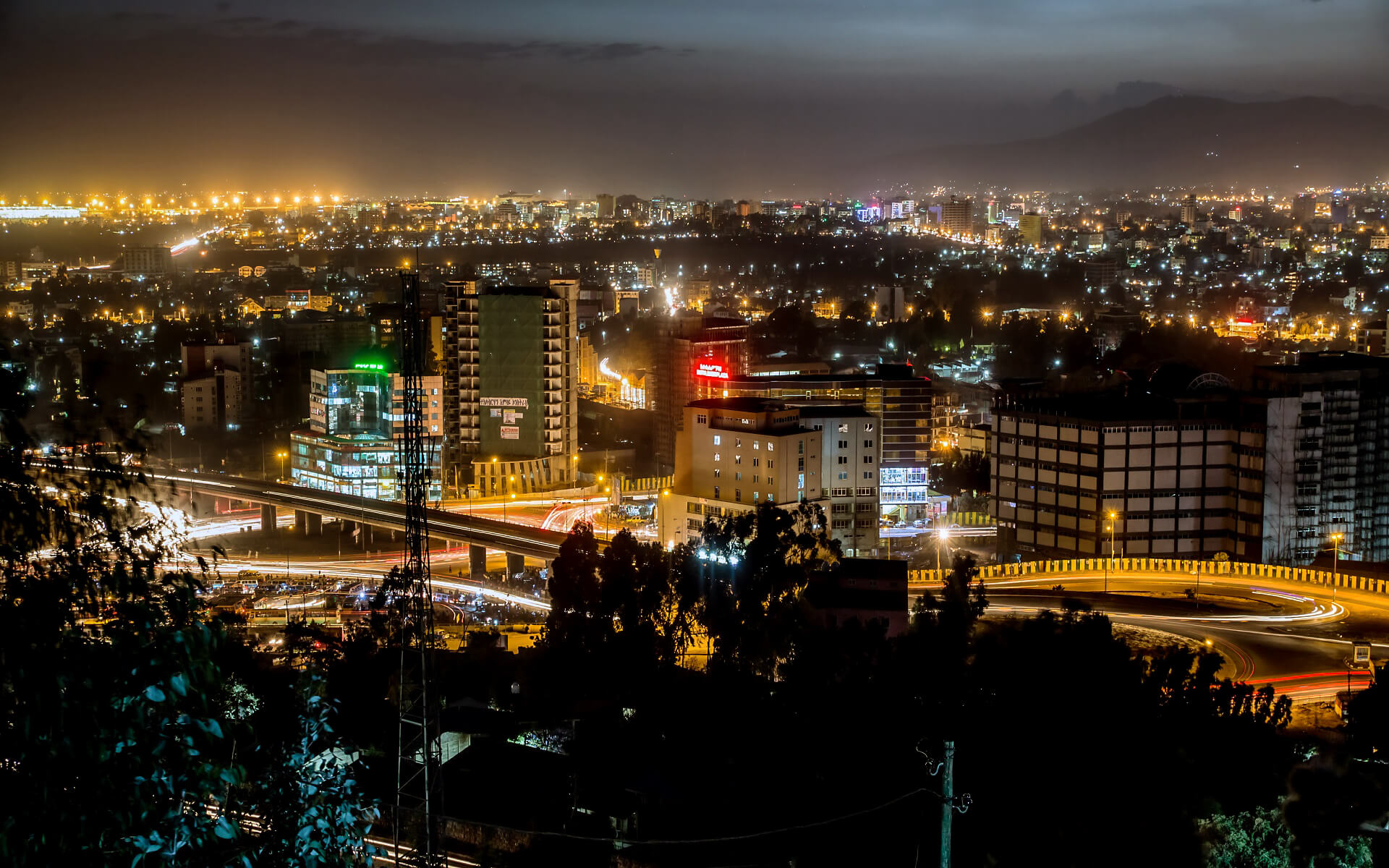Ethiopia is a sovereign state in Africa’s Horn. It is bordered to the north and northeast by Eritrea, to the east by Djibouti and Somalia, to the west by Sudan and South Sudan, and to the south by Kenya. Ethiopia, with a population of almost 100 million people, is the most populated landlocked country in the world, as well as the second-most populous country on the African continent after Nigeria. It has a total land area of 1,100,000 square kilometers (420,000 square miles), and Addis Abeba is its capital and major city.
Some of the earliest evidence for anatomically modern humans has been discovered in Ethiopia, which is commonly thought to be the location from where modern humans first set out towards the Middle East and beyond. Linguists believe that the earliest Afroasiatic-speaking people settled in the Horn area during the Neolithic era. Ethiopia, which dates back to the 2nd millennium BC, was a monarchy for the most of its history. The Kingdom of Aksum maintained a cohesive culture in the region throughout the first century AD, followed by the Ethiopian Empire about 1137.
During the late-nineteenth-century Scramble for Africa, Ethiopia gained respect by becoming the only African country to beat a European colonial force and preserve its sovereignty. Following their independence, several African nations adopted the colors of Ethiopia’s flag. It was the first independent African member of the League of Nations and the United Nations in the twentieth century. At the end of Haile Selassie’s reign in 1974, power passed to a communist military dictatorship known as the Derg, which was backed by the Soviet Union until it was defeated by the Ethiopian People’s Revolutionary Democratic Front, which has ruled since around the time of the Soviet Union’s collapse in 1991.
Ethiopia is a multilingual country with over 80 ethnolinguistic groups, the four most populous of which are the Oromo, Amhara, Somali, and Tigrayans. The majority of the population speaks Afroasiatic languages of the Cushitic or Semitic branches. Furthermore, ethnic minority groups in the southern parts speak Omotic languages. The nation’s Nilotic ethnic minority also speak Nilo-Saharan languages.
Ethiopia is the birthplace of the coffee bean, which originated in the town of Kefa (which was one of the 14 provinces in the old Ethiopian administration). With its vast fertile West, jungles, and numerous rivers, and the world’s hottest settlement of Dallol in its north, it is a land of natural contrasts. The Ethiopian Highlands are Africa’s longest continuous mountain range, and the Sof Omar Caves feature the world’s largest cave. Ethiopia has the highest number of UNESCO World Heritage Sites in Africa.
Ethiopia’s ancient Ge’ez script, commonly known as Ethiopic, is one of the world’s oldest alphabets. The Ethiopian calendar coexists with the Borana calendar, which is about seven years and three months behind the Gregorian calendar. A minor majority of the population is Christian (mostly the Ethiopian Orthodox Tewahedo Church and P’ent’ay), but around one-third is Muslim (primarily Sunni Islam). The nation is home to the Migration to Abyssinia and Negash, Africa’s earliest Muslim community. A sizable group of Ethiopian Jews, known as Bete Israel, lived in Ethiopia until the 1980s, but the majority of them have since moved to Israel.
Ethiopia is a founding member of the United Nations, the Group of 24 (G-24), the Non-Aligned Movement, the Group of 77, and the Organization of African Unity. Ethiopia’s capital city, Addis Abeba, is home to the African Union, the Pan African Chamber of Commerce and Industry, the United Nations Economic Commission for Africa, the African Aviation Training Headquarters, the African Standby Force, and many global non-governmental organizations (NGOs) focused on Africa. Ethiopia’s economy was destroyed by civil wars and communist purges in the 1970s and 1980s. However, the nation has lately begun to recover and currently boasts the largest economy (by GDP) in East and Central Africa. Ethiopia has the 42nd most powerful military in the world, and the third most powerful in Africa, according to Global Fire Power.


